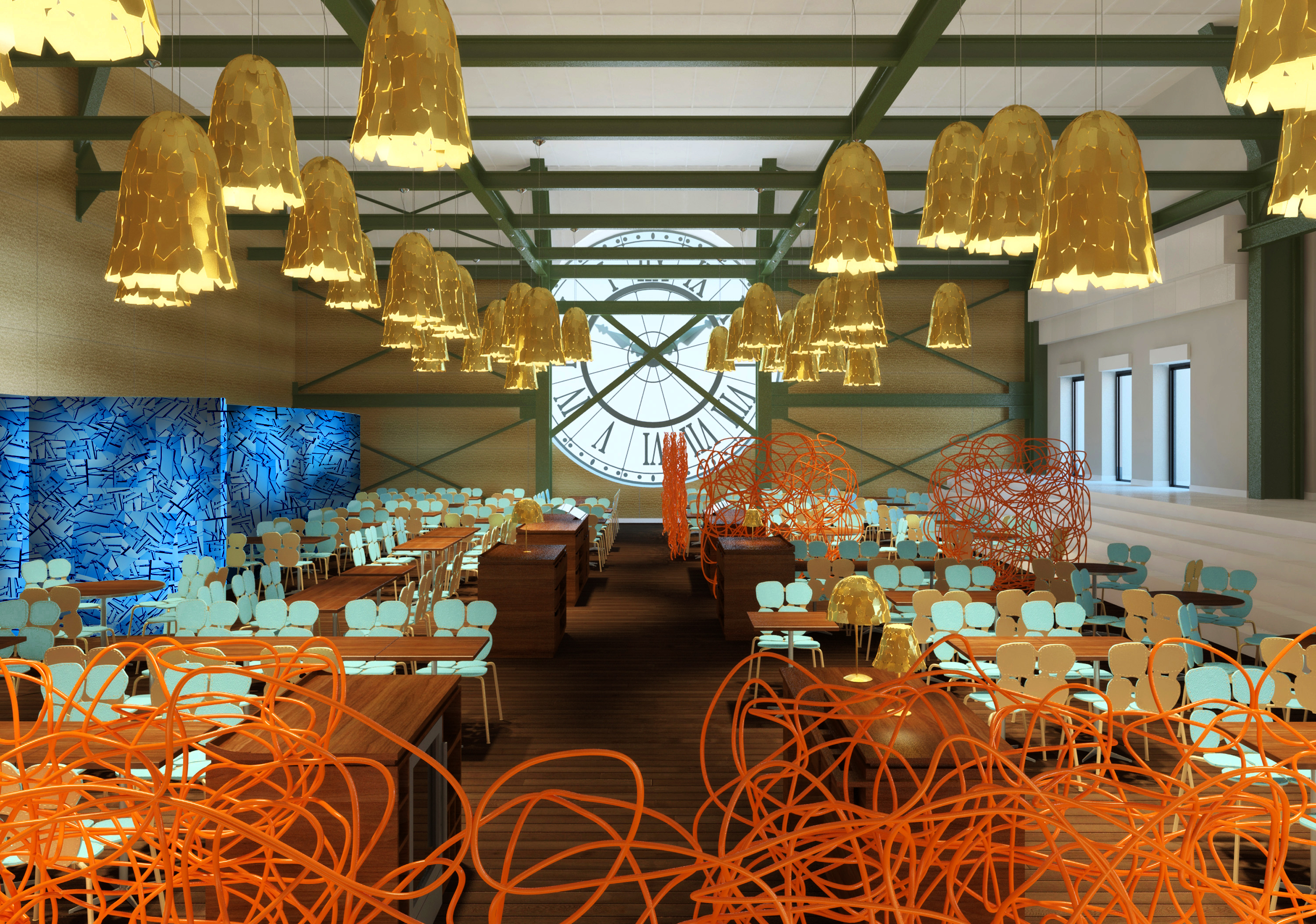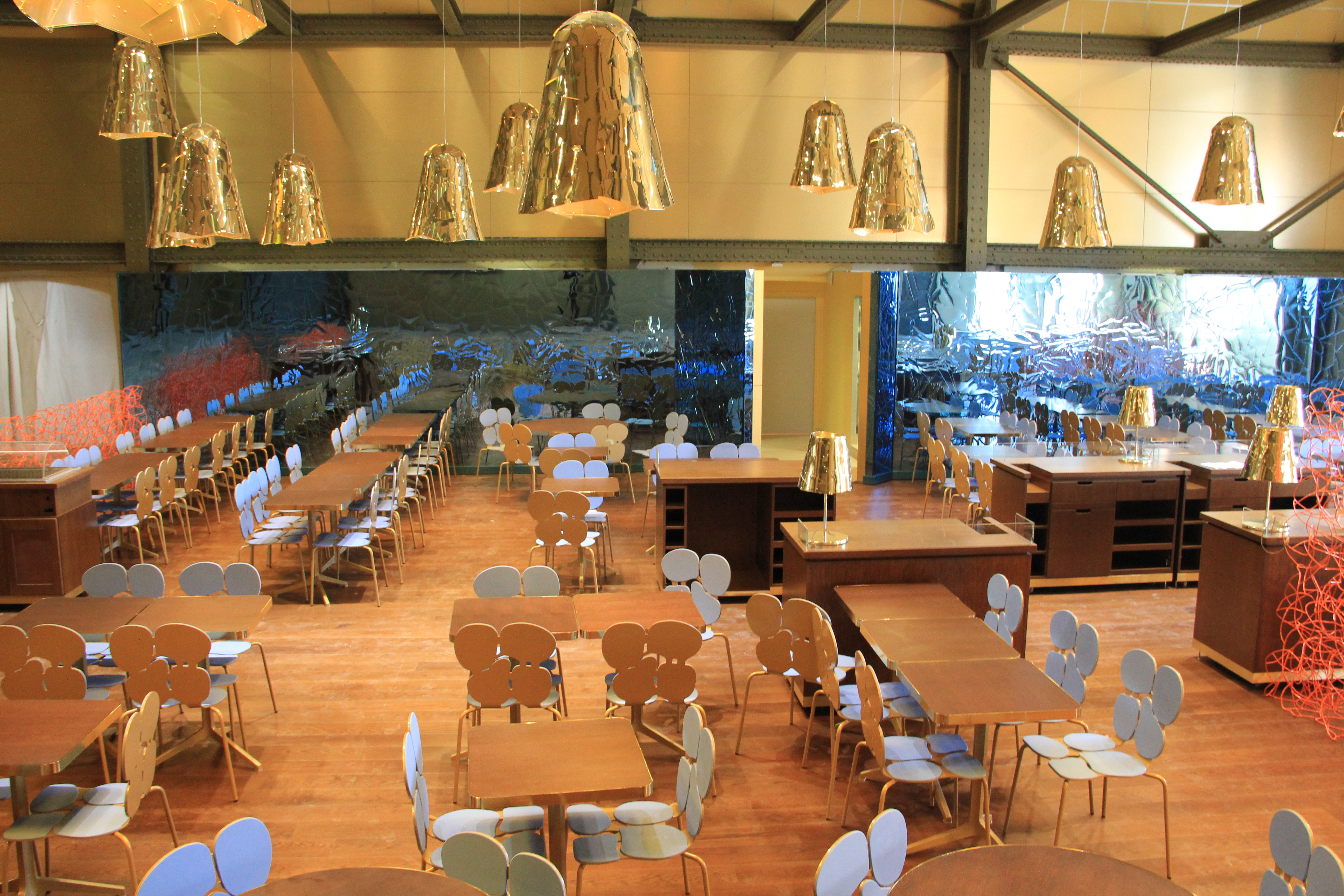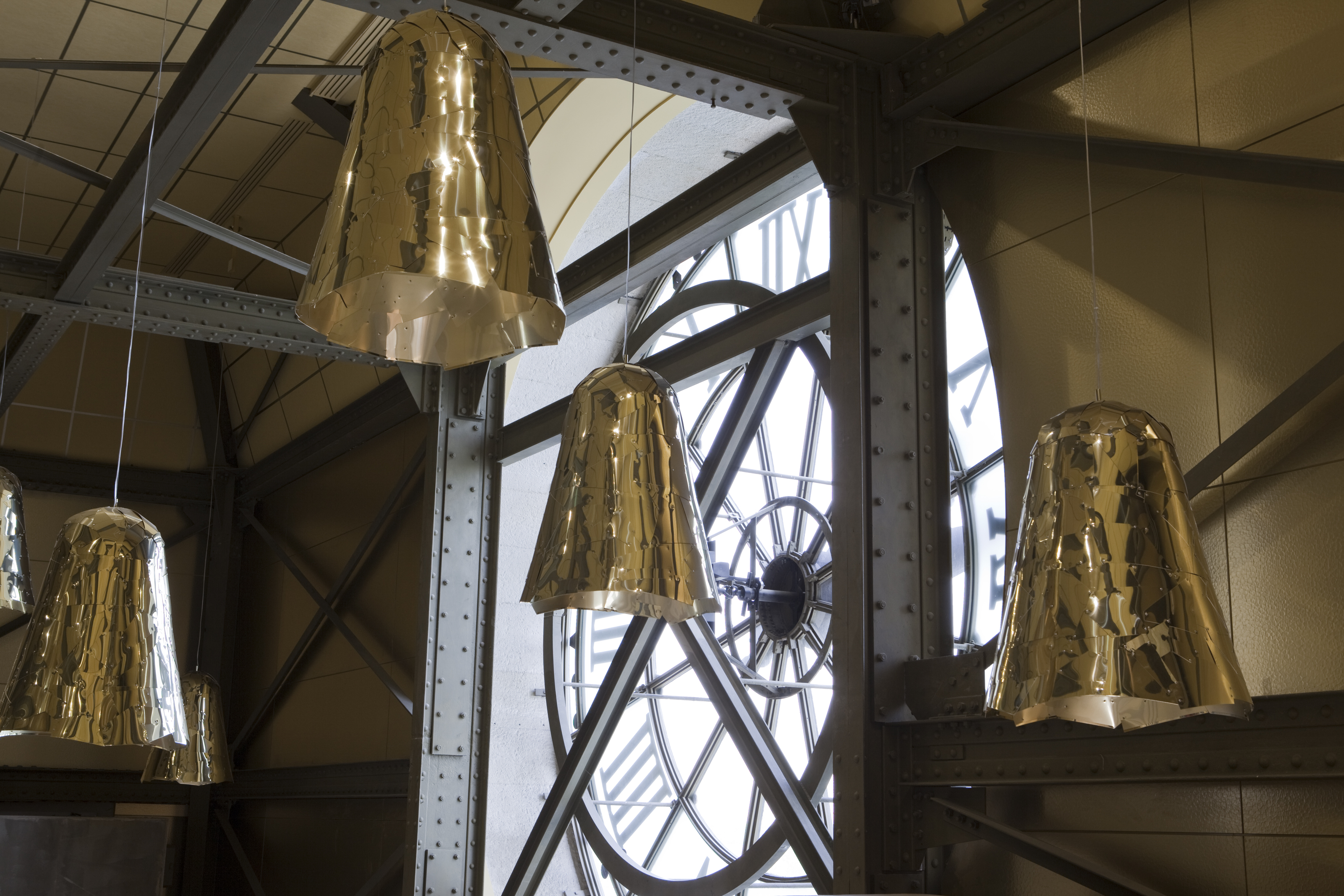As hybridisation is now a common and widespread practice, our contemporary world is becoming accustomed to it. However, when you discover Fernando and Humberto Campana at the Café de l'Horloge, in the former Orsay railway station in Paris, you still experience something of an “aesthetic shock”.
What would they think today, those purists who, when Gae Aulenti redesigned the museum in the mid 80s, were already pointing out signs of “violence” regarding the original configuration of this former 19th century railway station? What would they think now that the Brazilian Brothers' organic and fragmented forms have infiltrated this environment, dominated by powerful structures and by culture with a capital C? Now that Fernando and Humberto, with their totally “atypical” backgrounds -– the rural Italy of their maternal grandparents, the “Indio” Brazil of their childhood and even the creative “violence” of a megalopolis such as Sao Paulo – are covering Parisian architecture with twisted wire, reflective acrylic and strips of golden aluminium, creating, like new Flash Gordons arriving on the distant planet of Mongo, the image of a future that, in some way, resembles an ancestral past.
It was the Italian company Edra that succeeded in first reinterpreting and then realising this three-dimensional dream of the Campana brothers, massively expanding the mirror-finish methacrylate landscapes of the „Brasilia” collection to create large panels diffusing a blue aquarium-like light; transforming, like alchemists from another time, the 180 silver shapes of the “Campana” lamps into golden fragments; developing the jumble of steel wire of the “Corallo” sofas into large wood panels; by producing, finally, a totally new model; a chair with a gold varnished frame, with a back rest and seat in beautiful printed polyurethane, resembling a strange phytomorphic organism where the seat and back rest are leaves, or a map of an area hollowed out by a great river.
At the Café de l'Horloge now, there is no sign of the typical bourgeois comfort of Parisian bistros: no more red velvet, no more mahogany, no more brass knobs. On the contrary, there is a matrix similar to the one that prompted some of the Impressionist masters – coincidentally brought together here within these same walls – to set off for distant countries, so that they could continue to dream.
This creative project is part of the major redesign of the interior spaces for Nouvel Orsay. Started in 2009, these works will be completed on 20 October this year; the public will then have its first opportunity to visit the completely renovated Impressionist Gallery, a new gallery for temporary exhibitions as well as five floors devoted to the decorative arts. When this museographic work is finished, a rehang will put more than half of the museum's masterpieces on display.
























